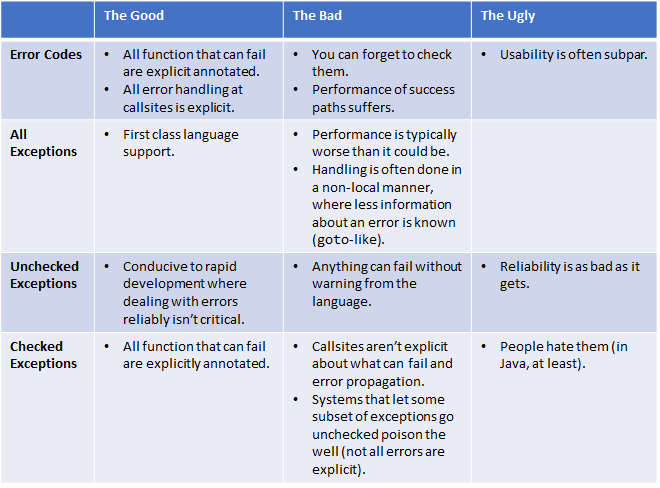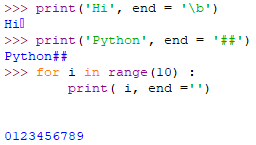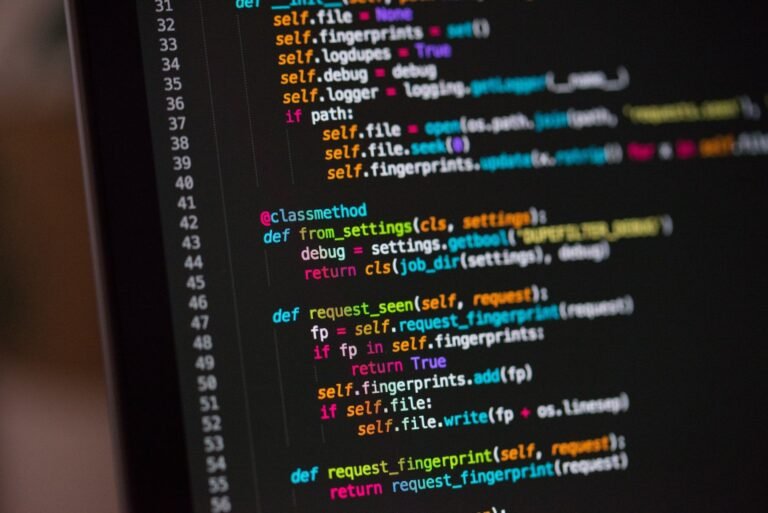What is the Difference between Syntax Error And Exception in Python: Unraveling Key Distinctions
A syntax error occurs when the code violates Python’s grammar rules. An exception happens during code execution due to unexpected conditions.
Syntax errors and exceptions are common terms in Python programming. Understanding their differences is crucial for effective debugging. Syntax errors, detected by the interpreter, occur when the code does not follow Python’s language rules. These errors prevent the program from running.
Examples include missing colons or parentheses. On the other hand, exceptions occur during runtime. They happen when the program encounters an unexpected situation, like division by zero or file not found. Exceptions can be handled using try-except blocks, allowing the program to continue running. Mastering these concepts helps create robust and error-free Python applications.
Syntax Errors In Python
Understanding syntax errors is crucial for anyone learning Python. These errors occur when the code breaks Python’s grammar rules. They prevent the program from running.
Definition
In Python, a syntax error happens when the code structure is incorrect. The Python interpreter can’t understand the code, so it throws an error. This error must be fixed before running the code.
Common Causes
- Misspelled keywords: Using “pritn” instead of “print”.
- Missing colons: Forgetting the colon after an “if” statement.
- Incorrect indentation: Misaligned code blocks.
- Unmatched parentheses: Leaving out a closing parenthesis.
- Misplaced or missing quotes: Forgetting to close a string with quotes.
Consider this example:
if True
print("Hello World")
This code will cause a syntax error because it is missing a colon.
if True:
print("Hello World")
Adding the colon fixes the error.
Examples Of Syntax Errors
Syntax errors are common mistakes in Python that occur when the code violates the rules of the language. These errors prevent the code from being executed. Let’s look at some common examples of syntax errors.
Missing Colons
A common syntax error is forgetting to add a colon : after control flow statements like if, for, or while. The colon signals the start of an indented block.
For example:
if x > 10
print("x is greater than 10")This will raise a syntax error because the colon is missing after if x > 10. The correct code should be:
if x > 10:
print("x is greater than 10")Incorrect Indentation
Python uses indentation to define blocks of code. Incorrect indentation will lead to syntax errors.
For example:
def my_function():
print("Hello World")This code will raise an indentation error. The print statement should be indented within the function:
def my_function():
print("Hello World")Incorrect indentation can also occur within control flow statements.
For example:
if x > 10:
print("x is greater than 10")It should be:
if x > 10:
print("x is greater than 10")Indentation errors are easy to make but also easy to fix once identified.
Exceptions In Python
Exceptions in Python help manage errors during program execution. These errors occur when the program runs into unexpected situations. Handling exceptions properly improves code reliability.
Definition
An exception is an event that disrupts the flow of a program. It is raised when a program encounters something unexpected. Unlike syntax errors, exceptions occur during runtime.
Common Types
Python has several built-in exceptions. Here are some common ones:
- ZeroDivisionError: Raised when dividing by zero.
- IndexError: Raised when accessing an invalid index in a list.
- KeyError: Raised when a dictionary key is not found.
- TypeError: Raised when an operation is applied to an incorrect type.
- ValueError: Raised when a function receives an argument of the correct type but an inappropriate value.
Consider this simple example:
try:
result = 10 / 0
except ZeroDivisionError:
print("Cannot divide by zero!")
This code handles the ZeroDivisionError exception. It prints a friendly message instead of crashing.
Examples Of Exceptions
Exceptions in Python are errors detected during execution. They disrupt the normal flow of a program. Let’s explore some common exceptions. These include ZeroDivisionError and FileNotFoundError.
Zerodivisionerror
A ZeroDivisionError occurs when a number is divided by zero. Python raises this error to prevent undefined results.
Consider this example:
try:
result = 10 / 0
except ZeroDivisionError:
print("You can't divide by zero!")
In this code, dividing 10 by 0 raises a ZeroDivisionError. The except block catches the error. It then prints a simple message. This keeps the program from crashing.
Filenotfounderror
A FileNotFoundError is raised when trying to access a file that does not exist. Python uses this exception to handle file-related errors gracefully.
Here is an example:
try:
file = open('non_existent_file.txt', 'r')
except FileNotFoundError:
print("The file does not exist!")
In this example, Python raises a FileNotFoundError. The except block catches it. It then prints a clear message. This prevents the program from crashing.
Key Differences
Understanding the key differences between syntax errors and exceptions in Python is crucial. It helps developers write better code and debug effectively.
Detection Time
Syntax errors are detected during the parsing stage. The Python interpreter identifies them before the code runs. They occur due to mistakes in the code’s structure.
On the other hand, exceptions are detected during the program’s execution stage. They happen when the code runs into problems like division by zero.
Handling Methods
Syntax errors need to be fixed by the programmer. The code will not run until all syntax errors are resolved. They are often highlighted by the code editor.
Exceptions can be managed using try and except blocks. This allows the program to handle errors gracefully and continue running.
Here is an example:
try:
result = 10 / 0
except ZeroDivisionError:
print("You cannot divide by zero!")| Aspect | Syntax Error | Exception |
|---|---|---|
| Detection Time | Before code execution | During code execution |
| Handling Method | Fix the code | Use try-except blocks |
Understanding these key differences helps write cleaner and more reliable code. Syntax errors are structural issues, while exceptions are runtime problems.

Credit: www.slideshare.net
Handling Syntax Errors
Handling syntax errors in Python is crucial for smooth code execution. Syntax errors occur due to incorrect language rules. They are easy to spot but need careful handling.
Using Ides
Integrated Development Environments (IDEs) help detect syntax errors quickly. They highlight mistakes in your code. This makes it easier to fix them.
Popular IDEs include:
- PyCharm – Known for its powerful error detection
- Visual Studio Code – Offers extensive support for Python
- Jupyter Notebook – Great for data science projects
These tools provide immediate feedback. They save time and reduce frustration.
Code Reviews
Code reviews are another way to catch syntax errors. Reviewing code with a team can identify hidden mistakes. It also ensures coding standards are met.
Follow these steps for an effective code review:
- Use a version control system like Git
- Have a checklist for common syntax errors
- Review small code changes regularly
Code reviews improve code quality. They also foster better collaboration among team members.
Handling Exceptions
In Python, exceptions are events that disrupt the flow of a program. Handling exceptions ensures your program can deal with unexpected situations. This improves the robustness of your code.
Try-except Blocks
Python uses try-except blocks to handle exceptions. The try block contains code that might throw an exception. The except block handles the exception if it occurs.
try:
result = 10 / 0
except ZeroDivisionError:
print("You can't divide by zero!")
The code inside the try block attempts to divide by zero. This raises a ZeroDivisionError. The except block catches this error and prints a message.
Custom Exception Classes
Sometimes, built-in exceptions are not enough. You can create custom exception classes to better handle specific errors in your code.
class CustomError(Exception):
pass
try:
raise CustomError("This is a custom error")
except CustomError as e:
print(e)
In this example, we define a new exception class called CustomError. We then raise this exception and catch it using an except block. This allows for more descriptive and clear error handling in your programs.

Credit: www.slideshare.net
Best Practices
Understanding the difference between Syntax Errors and Exceptions in Python is crucial. Adopting best practices helps you write better and error-free code. Below are some key practices to follow.
Consistent Coding Style
Maintaining a consistent coding style reduces syntax errors. Use tools like PEP8 for guidelines.
- Indent properly to avoid IndentationErrors.
- Use clear and descriptive variable names.
- Follow naming conventions for functions and classes.
Stick to a style guide to keep your code readable and maintainable. This helps others understand your code quickly.
Comprehensive Testing
Conducting comprehensive testing identifies exceptions early. Use Python’s built-in unittest module for this.
- Write unit tests for individual functions.
- Test for different types of inputs.
- Check for edge cases.
Testing ensures your code handles unexpected situations gracefully. It reduces runtime errors and improves reliability.
By following these practices, you can minimize both syntax errors and exceptions. This will make your Python code robust and efficient.

Credit: joeduffyblog.com
Frequently Asked Questions
What Is A Syntax Error In Python?
A syntax error in Python occurs when the code violates the language’s grammar rules. This makes the code impossible to interpret. It happens during the parsing stage, before execution.
What Is An Exception In Python?
An exception in Python is an error detected during execution. It disrupts the normal flow of the program. Unlike syntax errors, exceptions occur after the code is parsed and run.
How Do Syntax Errors Differ From Exceptions?
Syntax errors occur before code execution, during parsing. Exceptions happen during code execution. Syntax errors are often easier to fix, as they are detected early.
Can Exceptions Be Handled In Python?
Yes, exceptions can be handled using try and except blocks. This allows the program to continue running even after an error occurs.
Conclusion
Understanding the difference between syntax errors and exceptions in Python is crucial for effective coding. Syntax errors occur when the code structure is incorrect. Exceptions are raised during program execution due to unexpected conditions. By mastering these concepts, you’ll write cleaner and more efficient Python code, enhancing your programming skills.






